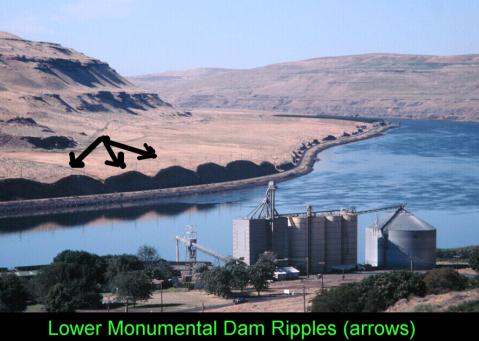In that thread, I asked "If a catastrophic flood created the Scablands in a short period of time, couldn't other geological features elsewhere be also created in a short amount of time?"
One of the features in the Scablands are the giant ripple marks.

http://www.detectingdesign.com/harlenbretz.html
Similar to giant ripple marks are drumlins and ribbed moraines.
Question for debate:
How did all these giant ripples form?





